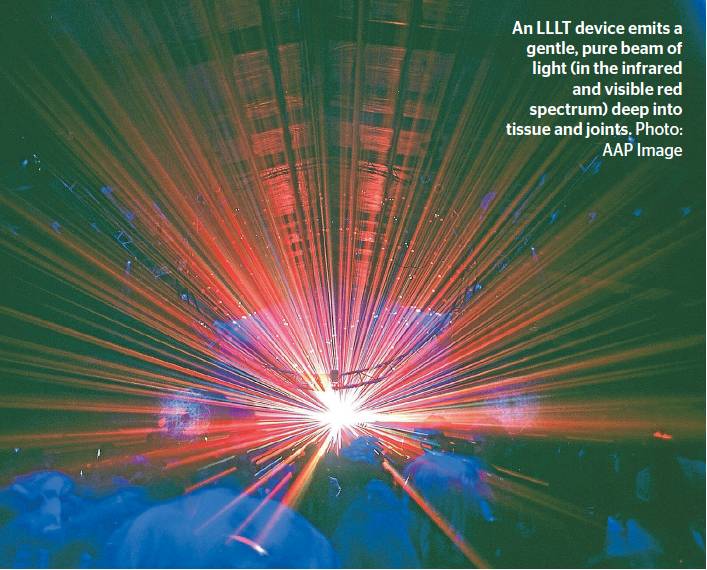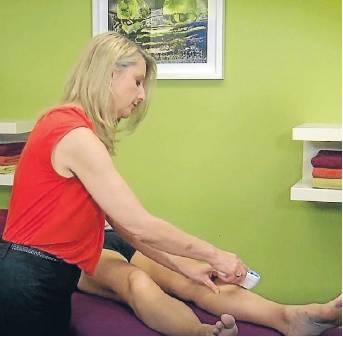Bring some light relief to joints and muscles
Medication is not the only answer to what can be the debilitating pain, swelling, stiffness and limited movement caused by osteoarthritis.
While not yet curable, the condition is usually manageable with a multimodal treatment approach.
Studies have shown the effects of low level laser therapy (LLLT) may reduce pain for mild osteoarthritis sufferers.
‘‘Joints need movement to be healthy; muscle, nerves and their soft tissues control and limit movement,’’ says physiotherapist Robyn Gant, owner of Joint Health, a physiotherapy private practice in Sydney.
‘‘In my practice, many clients are referred from rheumatologists, GPs, sport and orthopaedic specialists with a diagnosis of arthritis, bursitis, tendon injury or ligament injury. Once you receive a diagnosis, it’s common to assume all aches and pains are caused by the one condition.
‘‘However, there are often other contributing factors such as tight and tender muscles with irritable trigger points that refer pain to remote areas, limit joint mobility or cause nerve irritation.
‘‘I have been using LLLT in my practice for more than 25 years and find muscle tightness, tenderness and irritated nerves respond readily to a combination of this, gentle soft tissue massage and exercise.
‘‘In particular I have been using the handheld Handy Pulse Laser since 2012, in which I have no financial interest.’’
An LLLT device emits a gentle, pure beam of light (in the infrared and visible red spectrum) deep into tissue and joints, producing a photochemical effect on cells, without producing heat. It can’t burn or damage cells.
Also known as photobiomodulation, LLLT refers to the therapeutic effects of specific frequencies of light, and is a ‘‘cold’’ laser, that is, with lower wavelengths and power.
This is very different to high-powered laser used in surgery and for laser eye surgery, where therapeutically managed destruction of tissue occurs, or Intense Pulsed Light (IPL) devices used for hair removal.
‘‘Many of our clients have experienced the immediate therapeutic effects of LLLT on pain-sensitive areas during their treatment at Joint Health and have often asked how it works,’’ says Gant.
‘‘Thanks to Australian research we now have a clearer understanding of how LLLT works in treating musculoskeletal and joint pain.
‘‘It can have an immediate ‘anaesthetic’ effect on irritated nerve fibres that transmit pain and can help to reduce swelling, improving function of the nerve tissue.
‘‘So-called trigger points in muscles are effectively irritated nerve endings in taut muscles, and nerves can also become irritated where they pass through tunnels in muscle and connective tissue.
‘‘LLLT can also have a cumulative effect, meaning that the more we use it the less we need to use it, as pain settles and joint mobility improves.
‘‘We have had clients who have been able to delay planned joint replacement surgery and resume activities they thought were no longer possible, which is immensely rewarding,’’ says Gant.
The key to success with LLLT is working out where to use it, she says.
‘‘The source of the symptoms is often not directly where the pain is felt. This is where professional advice is critical to the effectiveness of the treatment.’’

